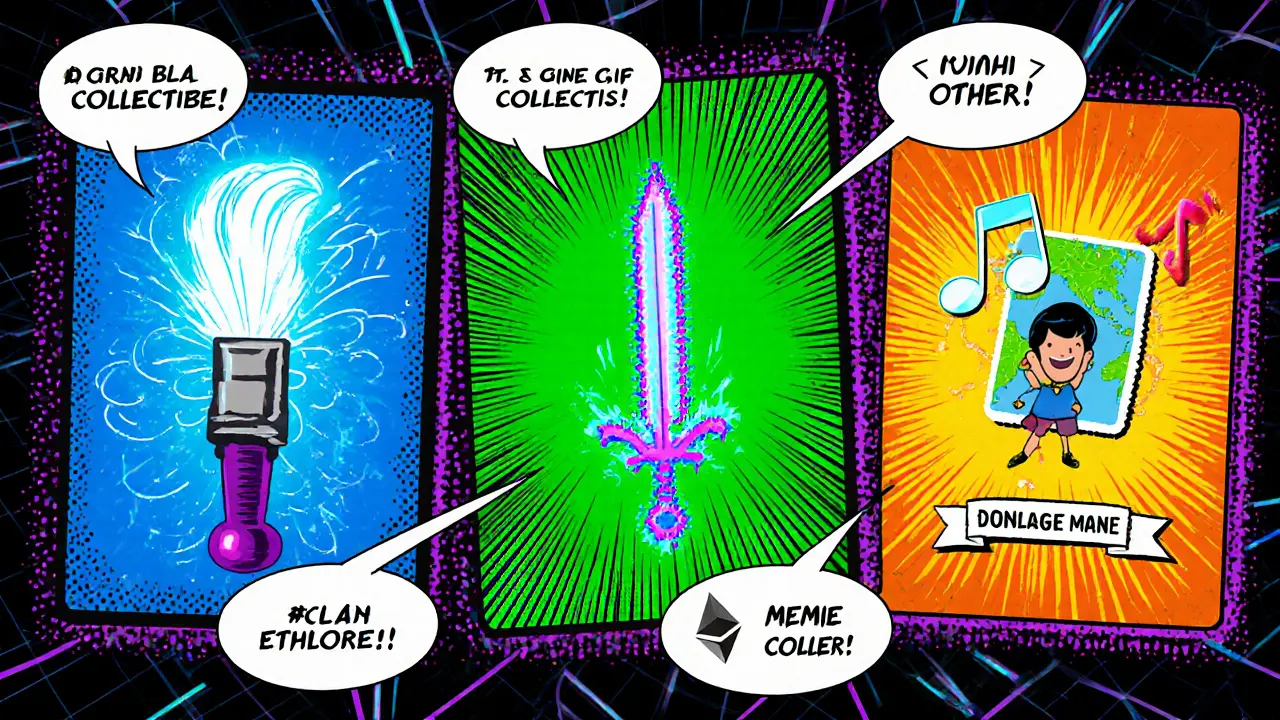Digital Collectibles: The New Frontier of Crypto Assets
When talking about digital collectibles, unique blockchain‑based items that can be owned, traded, and displayed digitally. Also known as crypto collectibles, they are a type of Non-Fungible Token (NFT), a token that represents a one‑of‑a‑kind asset on a ledger. The blockchain provides the immutable record that guarantees scarcity, while an airdrop often serves as the distribution method that introduces new collectibles to a community. In short, digital collectibles encompass NFTs, rely on blockchain for security, and are frequently delivered via airdrops. This triple link means anyone can verify ownership, creators can mint verifiable assets, and users can receive them without a middleman.
Why Digital Collectibles Matter Today
Digital collectibles have moved beyond art‑gallery hype. Gamers now earn exclusive skins, athletes release limited‑edition moments, and brands launch branded badges that double as loyalty tokens. Because each item lives on a public ledger, you can prove that a rare in‑game sword isn’t a copy, or that a concert ticket isn’t forged. This trust boost is why many projects pair collectibles with crypto tokens that grant holders voting rights or staking rewards. The ecosystem also fuels new business models: creators earn royalties every time their item changes hands, and collectors can lock assets in DeFi protocols to earn yield. All these uses circle back to the core idea that a digital collectible is more than a picture—it’s a programmable asset that can interact with other blockchain services.
Market data shows the volume of collectible trades has surged over the past two years, with daily sales crossing billions of dollars. Yet the space isn’t without risk. Smart‑contract bugs can freeze assets, and speculative hype can drive prices far beyond intrinsic value. Security audits, community reputation, and transparent tokenomics are the three pillars that help separate lasting collectibles from flash‑in‑the‑pan hype. Regulatory chatter also adds a layer of complexity; some jurisdictions treat collectibles as securities, while others classify them as digital goods. Understanding these nuances helps you navigate the space smarter and avoid common pitfalls.
Below you’ll find a hand‑picked selection of articles that break down everything from mining difficulty that keeps blockchain networks stable, to detailed airdrop guides for projects like Velas and Zuki Moba, and deep dives into niche tokens like MicroDoge and Orbit Chain. Whether you’re hunting your first NFT, figuring out how airdrops work, or just want to keep up with the latest trends, the posts ahead give practical tips, real‑world examples, and the kind of insider knowledge that lets you stay ahead of the curve. Ready to explore? Dive into the collection and start building your own digital collectible portfolio.

Understanding NFT Digital Art Collectibles: A Beginner’s Guide
Explore what NFT digital art collectibles are, how they work, where to buy them, and the risks involved. This guide covers tech basics, market categories, minting steps, and future trends.
October 21 2024